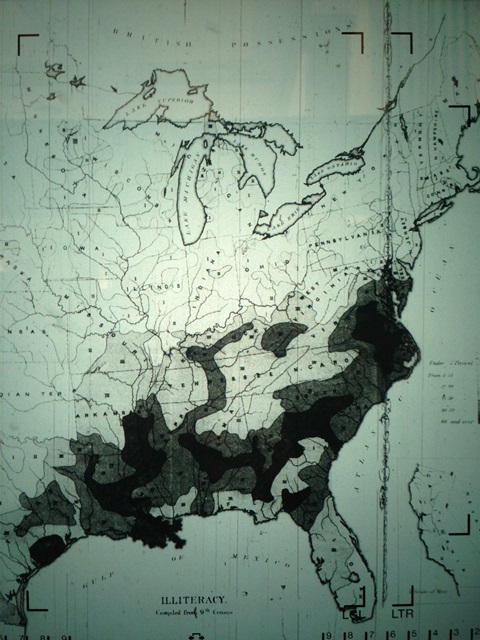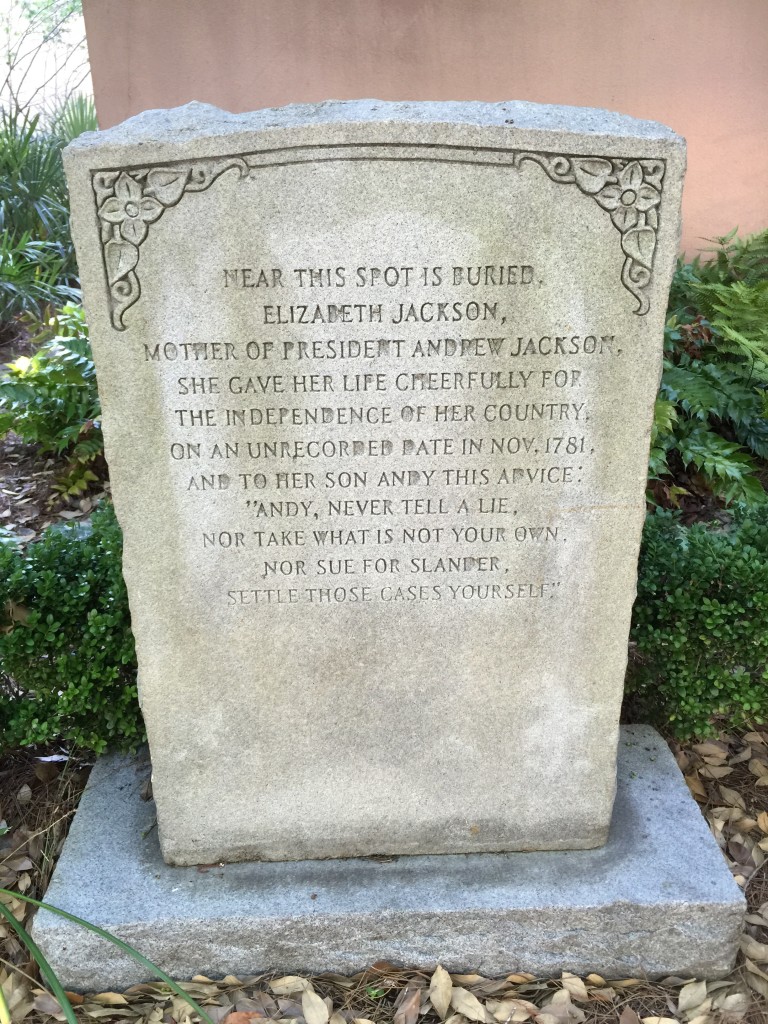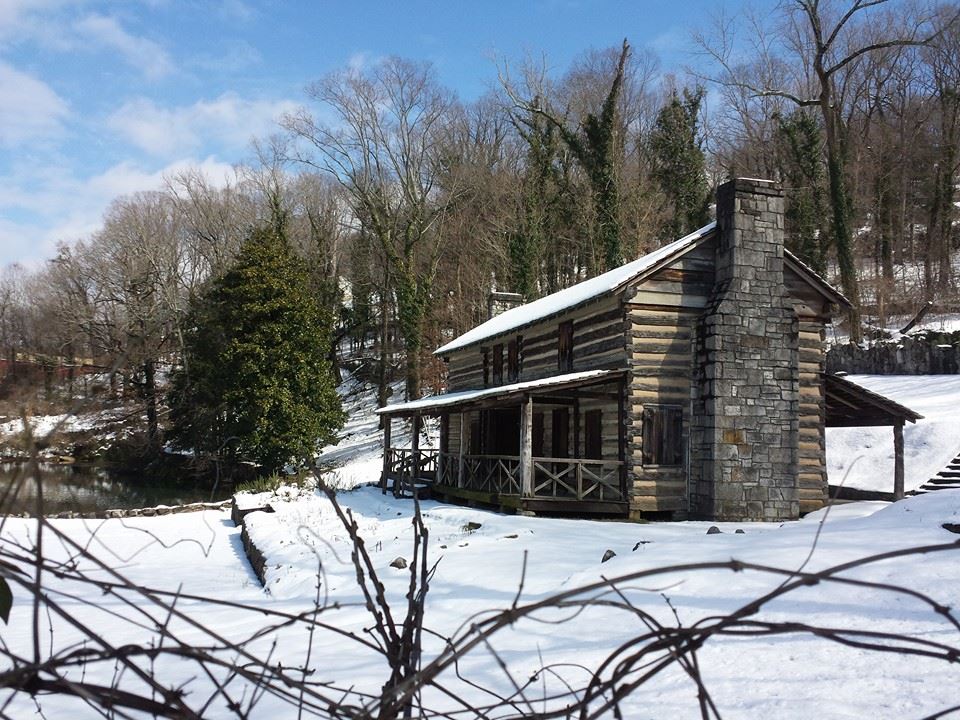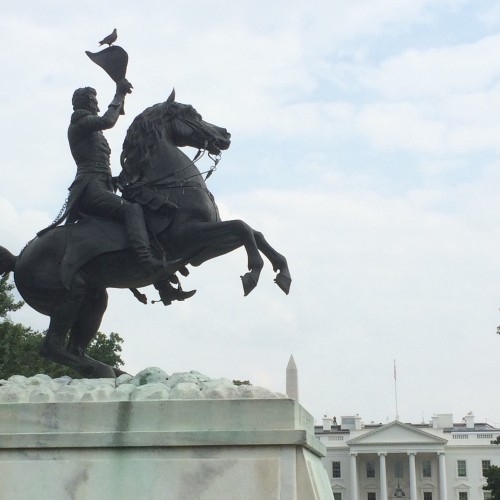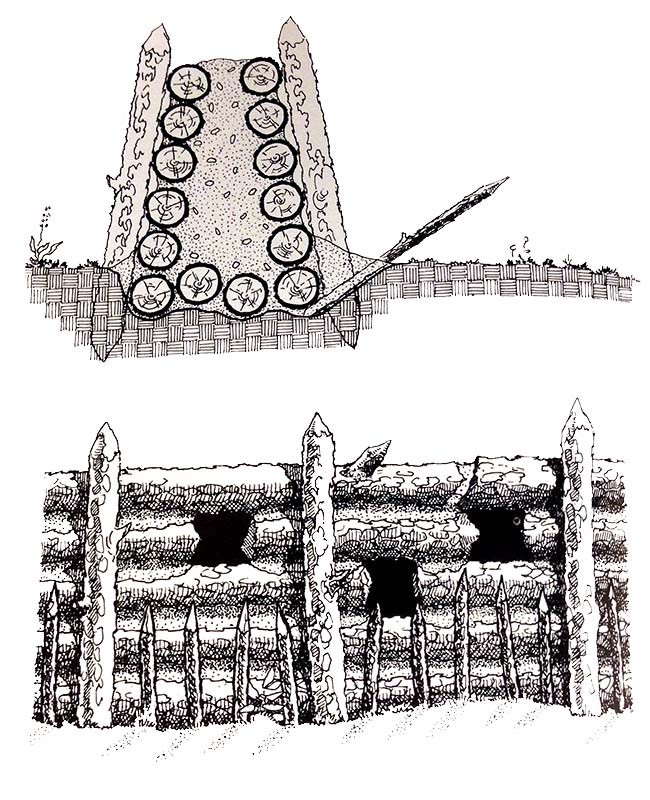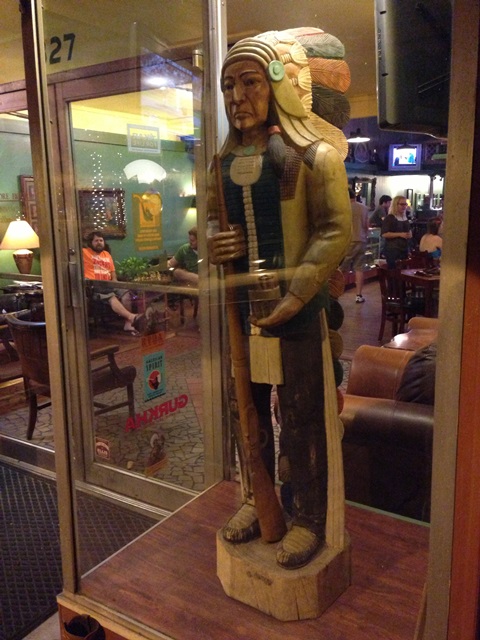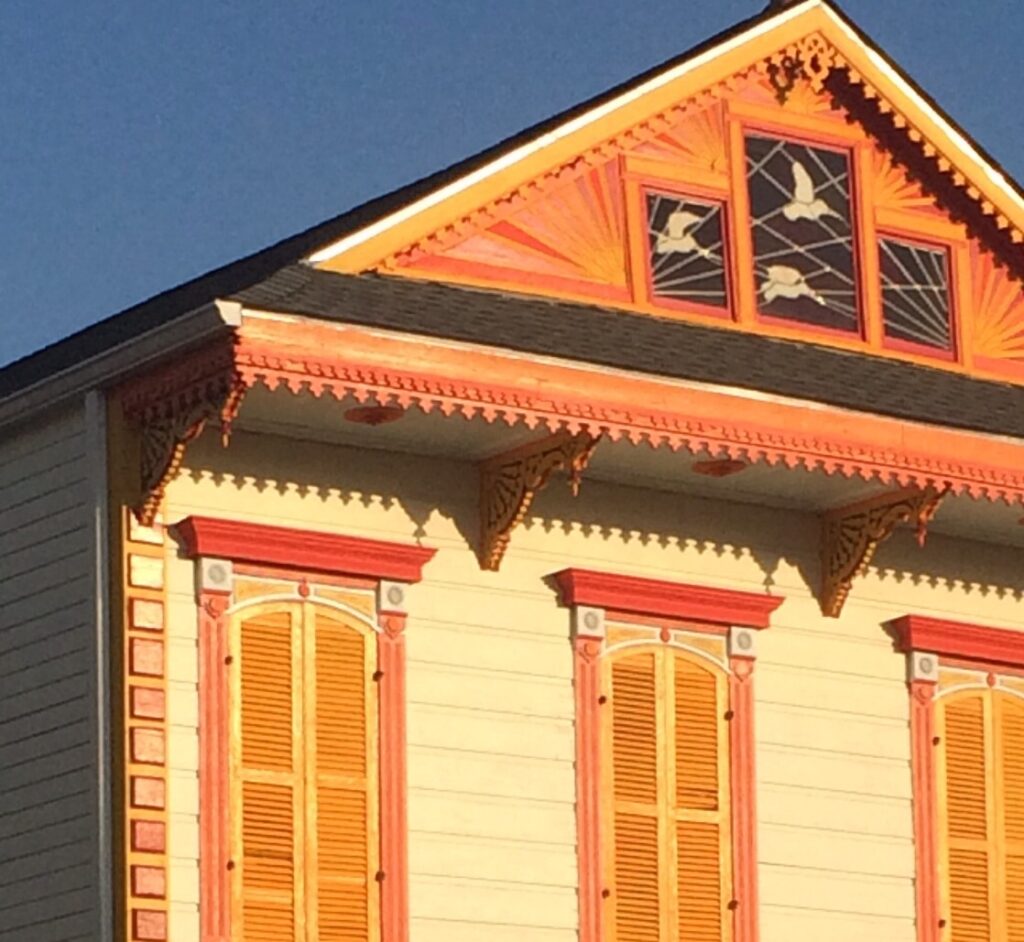Posts by 1Nsk33p
“Tribal Grounds” – The Backstory of a Cherokee Coffee
I received this coffee in Asheville, North Carolina from Natalie Smith, of the Eastern Band of the Cherokee. They are descendants of Cherokees who were allowed to remain in remote areas of North Carolina, even as most Cherokees were removed from the region in 1838. They remain part of the fabric of Jacksonland. She told me this:
Read MoreLiteracy in Jacksonland
The map comes from a book by Catharine Beecher, who campaigned against the Indian Removal Act of 1830. By profession Beecher was an educator. And when she wrote a memoir in 1874, she titled it “Educational Reminiscences and Suggestions.”
Read MoreAndrew Jackson in the State He Added to the Union
“One of the most striking images of Andrew Jackson can be found in the mural ‘A New Capital’ located inside the chamber of the Florida House of Representatives. Painted by Christopher M. Still, the mural depicts General Andrew Jackson holding a 23-star American Flag flown in 1821 – the year Florida became a territory of the United States. The painting contains 24 symbols of history including a dual placard nailed to a tree behind the Governor. I
Read MoreThe Shifting Racial Identity of John Ross
. Ross was a man of mixed race. He lived for years near the border between the Cherokee Nation and the “whiteside,” as he sometimes called the territory of white settlers. And in an era when Cherokees commonly wore white styles of clothing, Ross sometimes slid across the line.
Read MoreElizabeth Jackson’s Words of Wisdom to Her Son
From Belyna Bentlage of Indiana, a photo taken while visiting Charleston, South Carolina: “This stone marker, found on the campus of the College of Charleston, shows advice Elizabeth Jackson gave her son ‘Andy,’ the future 7th president of the United States: “Andy, never tell a lie, nor take what is not your own, nor sue…
Read MoreJohn Ross’s Home, Near a Crossing Point Between Worlds
“I am the Mayor of Rossville and I took this photo this past February.”
This gorgeous photo offers some sense of what it might have looked like to approach John Ross’s house in the early 1800’s. (Taken from another angle, a photo might show a coin laundry or even the back of the modern-day Rossville post office.) Documents and scientific study of the logs indicate that this house, which has been moved slightly from its original location, was Ross’s home in the years that he began operating a ferry across the Tennessee River a short distance away.
Read MoreJackson on the Rearing Horse
The Andrew Jackson statue in Lafayette Park in front of the White House in Washington, DC. Completed by Clark Mills in the 1850’s has been part of every President’s view ever since. This is one of several Jackson statues in similar poses.
Read MoreThe Defensive Wall That Became a Trap
This illustration shows the wall Creek Indians built for defense before the Battle of Horseshoe Bend in 1814. It was drawn for “Archaeological Investigations at Horseshoe Bend, National Military Park, Alabama” by Roy S. Dickens, a book that examined the surviving evidence at the scene of one of General Andrew Jackson’s great military triumphs.
Read MoreThe Wooden Indian in a Former Indian Settlement
This is a scene from the city of Rome, in north Georgia. In the 19th century this was Cherokee country, a mostly aagricultural area. The nearest settlement was called Ridge’s Ferry. Major Ridge, a prominent Cherokee planter, owned the ferry as well as a store and his plantation house, surrounded by fields where his enslaved laborers harvested cotton and other crops.
Read MoreThe City Where Andrew Jackson Looms Largest
It is, of course, New Orleans, which Jackson defended in the War of 1812. Slightly east of the city in 1815, he wrecked a professional British army with his improvised force of amateurs. It was considered an act of divine Providence in its time. Today it is possible to ascribe the victory to more prosaic causes. General Jackson was determined, confident, attentive to detail – and ruthless in putting down dissent within New Orleans itself. He was also a gifted leader who stitched together an army out of Kentucky and Tennessee frontiersmen, black and white New Orleans militiamen, Choctaw Indians, and even local pirates. And he placed them in a defensible spot behind a canal.
Read More
